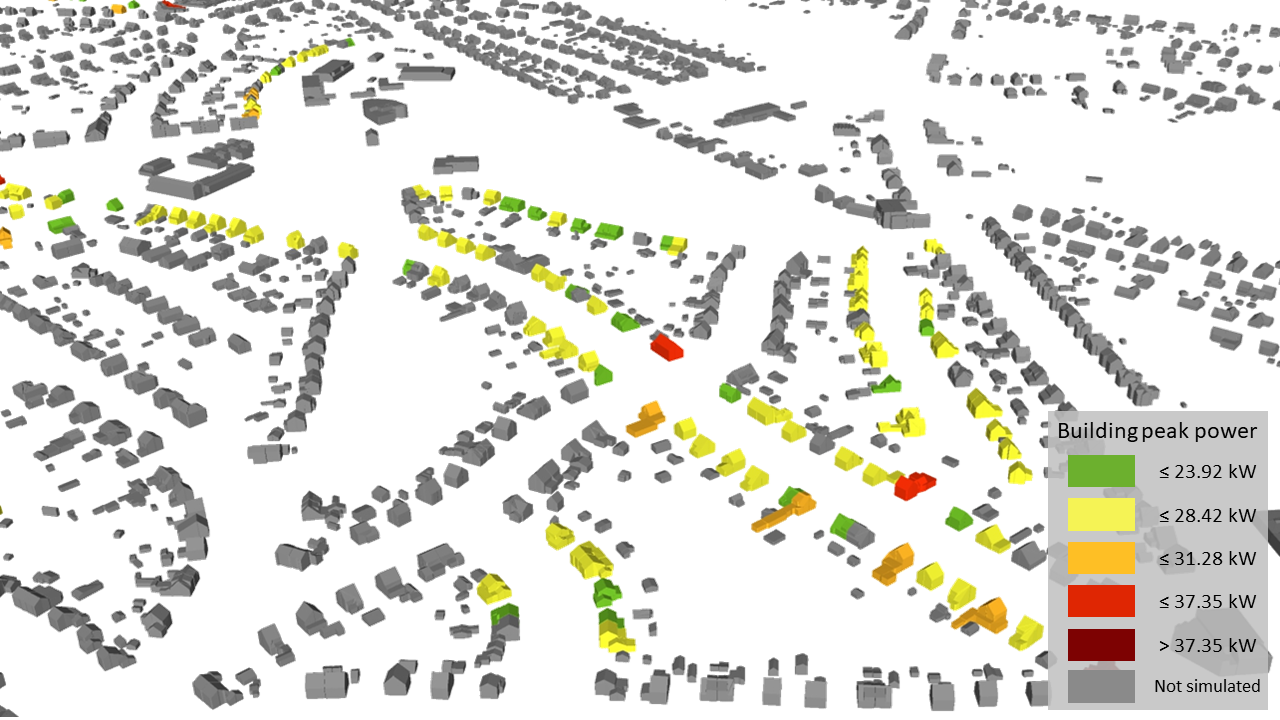Quantifying uncertainty propagation for the district energy demand using realistic variations on input data

The optimal design and operation of district energy systems highly depends on an accurate quantification of the district energy demand. However, a significant uncertainty arises due to the large amount of input data that is required to quantify the energy demand of existing districts. To assess the uncertainty propagation, Quasi-Monte Carlo simulations are applied to a residential district of 350 dwellings to generate 99 samples of every dwelling. The mean uncertainty of the district energy demand and the uncertainty on the mean district energy demand both decrease as the district size increases. Moreover, a preliminary sensitivity analysis indicates that the transmission losses are the most dominant parameters and should be gathered as accurately as possible when modelling existing districts.
Factsheet
| Number of buildings | 34650 |
| Number of thermal zones (per building) | 2 |
| Complexity of thermal zone model | High order (white box model) |
| Coupling/Decoupling between district network and buildings | Decoupling |
| Simulation tool | Dymola |
| Modelica libraries | IDEAS |
| Additional packages/workflows/scripts | BuildingsPy, StROBe, Teaser, ModelicaRes |
| Simulation time | 1 year + 1 month of pre-simulation |
| Computational time | - |
| Solver and tolerance | Dassl / 1e-3 |
| CPU speed | - |
Authors:
Ina De Jaeger (KU Leuven / EnergyVille / VITO / FWO - Belgium)
Glenn Reynders (EnergyVille / VITO - Belgium)
Dirk Saelens (KU Leuven / EnergyVille - Belgium)
Ina De Jaeger (KU Leuven / EnergyVille / VITO / FWO - Belgium)
Glenn Reynders (EnergyVille / VITO - Belgium)
Dirk Saelens (KU Leuven / EnergyVille - Belgium)
References:
De Jaeger, I., Reynders, G., Saelens, D. (2019). Quantifying uncertainty propagation for the district energy demand using realistic variations on input data. In: proceedings of the Building Simulation Conference 2019, Rome, 2-4 Sep.
De Jaeger, I., Reynders, G., Saelens, D. (2019). Quantifying uncertainty propagation for the district energy demand using realistic variations on input data. In: proceedings of the Building Simulation Conference 2019, Rome, 2-4 Sep.
